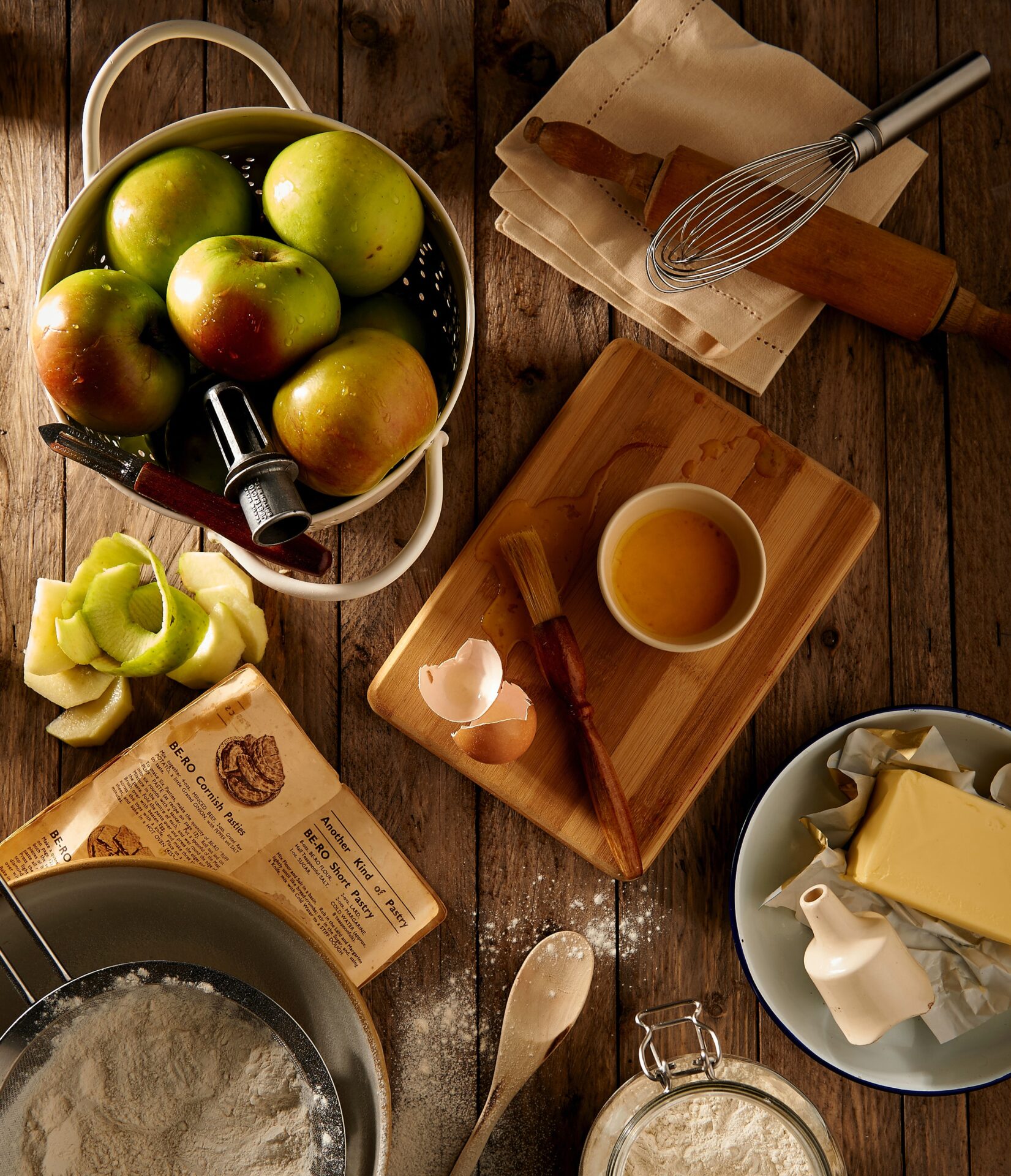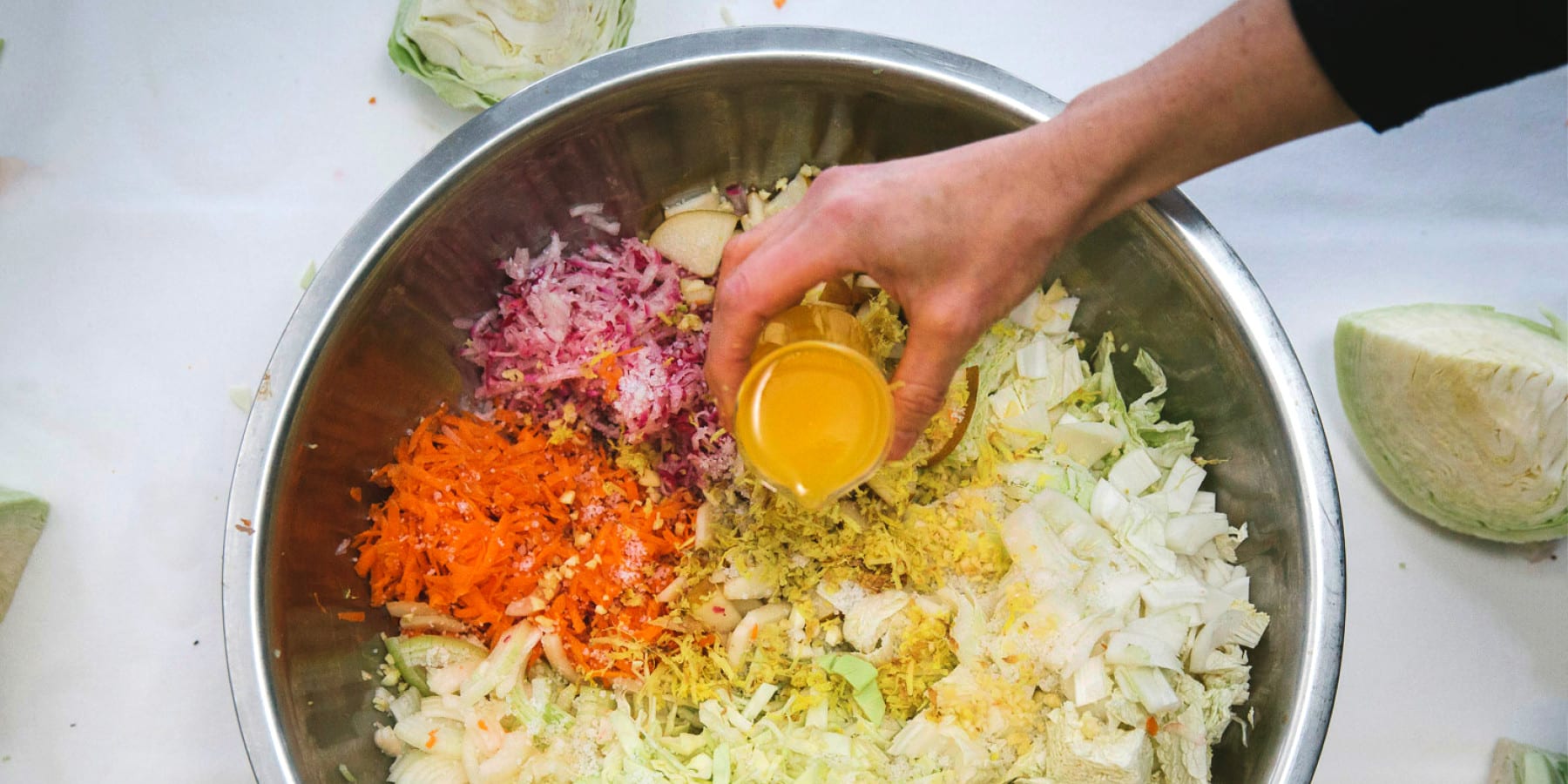Fermented foods are experiencing a cultural revival, and when you consider that pickles, beer, wine, yogurt, kimchi sourdough bread and sauerkraut are members of the fermented food family, it is easy to understand why. Want to give fermenting a try? Meaghan shares her recipe for Local Winter Kraut that is a probiotic-packed, crunchy, flavorful alternative to the soggy, pasteurized store-bought version.
recipe 
yields
1 gallon
5 pounds green cabbage
2 pounds Napa cabbage
3 medium carrots
5 small red turnips
1 small onion
1 Bosc pear or apple
5 cloves garlic, minced
2 tablespoons grated ginger, with skin
1 orange, juiced, approximately ⅛ cup
1 to 2 teaspoons dried pepper or to taste (such as Espelette, Cayenne or Jalapeño)
4 to 6 tablespoons coarse sea salt (taste after 4, then salt to taste)
ingredients
steps
- Wash produce well, and remove any bad parts. Produce does not need to be peeled but, remove seeds from pear.
- Reserve 5 to 6 outer cabbage leaves, set aside. Cut cabbage into four sections, remove core. Slice produce into thin bite sized pieces.
- Place everything in large bowl, add salt, spices (wear gloves if adding hot pepper!) and orange juice. Mix and massage with your hands. Squeeze! Work those veggies! Work salt into produce well to release the water and create a brine.
- Once a nice pool of brine has collected in bottom of bowl, approximately 2 to 3 cups, pack vegetables into clean, 2-gallon crock or wide mouth glass container. Be sure to push down with your hands to remove air pockets. After all vegetables are packed into jar, press down well so brine covers surface, creating an anaerobic environment. Layer reserved cabbage leaves onto surface of kraut. Place a weight (a plate topped with a jar filled with water works well) over surface, cover top of vessel with a clean towel and secure with a rubber band. Kraut should be covered in its brine with room at top of vessel to allow for expansion over first few days of active fermentation.
- Date outside of vessel and place in a location that is away from direct sun light, and maintains a relatively even temperature; 64-72 degrees is ideal, higher temperatures will speed up fermentation, cooler temperatures will slow it down.
- After 5 to 10 days, active fermentation will slow as lactic acid bacteria begin to take up residence. Kraut will continue to ferment vegetables into sour, tangy Winter Kraut. At this point jar up kraut into smaller portions and refrigerate or take what you want from crock and enjoy its flavorful changes until it’s all gone.
Chef Note: In our experience the most important component, when making any ferment, is time. Be patient. The vegetables do not turn into sauerkraut overnight. However, we like to start tasting our krauts around day 3. Remove your cloth, plate and jar and with clean hands try a sample of your kraut. It will still be really crunchy and fresh with the beginning stages of good bacteria taking hold. Wash off the plate, jar and return to the vessel with the cloth. Keep checking like this every few days. You will start to smell (and maybe hear!) the ferment becoming active; which is very exciting.
share
- From Meaghan and Shane Carpenter of Hex Ferments in Baltimore, Maryland









